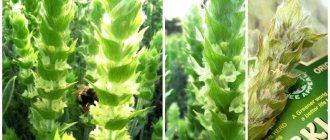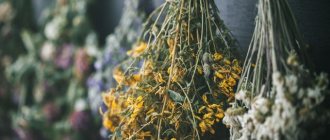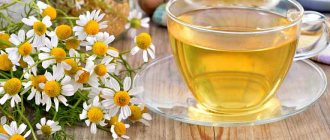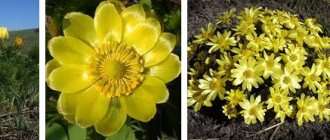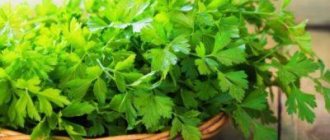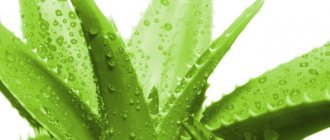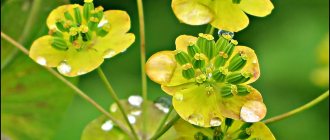Ginger
Ginger is a fantastic natural product that adds flavor to so many dishes.
This root vegetable ideally copes with inflammatory processes in the body, in particular in the gastrointestinal tract. Ginger improves metabolism, restores metabolism, eliminating oxidative damage to cells. The best way to use this plant is to eat the root raw or add the powder to your food. Ginger contains the substance gingerol, which can cope with many forms of inflammation, from colitis, diabetes, cancer and kidney disease.
Recommendation: eat 2-3 grams of ginger per day, but no more than 4 grams per day, otherwise you can cause heartburn and digestive system upset.
Joint tuberculosis
Joint tuberculosis
One form of extrapulmonary infection is joint tuberculosis. The hip, knee and vertebral joints are mostly susceptible to this disease.
Factors that give impetus to development are previous infectious diseases, unfavorable ecology, injuries, excessive stress, hypothermia.
Treatment with folk remedies
Externally
Yellow water lilies
- If there is a pond near your dacha or home in which yellow water lilies grow, you are in luck. Collect these beautiful flowers along with the roots - we need them for treatment. Chop the roots and pour boiling water over them. Leave until the water becomes tolerable to the skin. Pour the broth into a suitable container and take a bath on the sore joint. Treat yourself while the lily pad season continues.
- Ointment on the root of comfrey acts as a pain reliever. Grind the dry root to a powder, take the same amount of softened lard as the powder. Rub everything thoroughly and apply to the sore joint.
Inside
Vegetable infusion
- The infusion, which will be discussed below, copes very well with tuberculosis of the joints. Prepare radishes, carrots and beets. Squeeze a glass of juice from them, stir immediately and add a glass of honey. Stir until it is completely dissolved, pour into a bottle of suitable size, seal it well and bury it in the ground for two weeks. Before breakfast, lunch and dinner, drink two tablespoons of the product, shaking it first.
- Buy half a liter of natural dry white wine. Pour it into a saucepan, add two tablespoons of well-chopped wormwood root, put it on the fire and cook after it boils for ten minutes. Then add one spoon of honey and set aside until cool. You should take half a glass in the morning.
- Three times a day, prepare a decoction of wheatgrass root in milk and drink immediately. Heat a glass of milk, add two tablespoons of chopped wheatgrass roots, bring to a boil and cook for five minutes. Cool slightly and drink.
- Prepare an alcohol tincture of birch buds. Add a glass of honey to a glass of alcohol, stir, add one spoon of birch buds, cover and leave for a week and a half. Treat yourself by taking one spoon three times a day.
Herbs with anti-inflammatory effects
- Borovaya uterus. This is a popular plant that is used to restore the female genitourinary system. As a rule, an anti-inflammatory gynecological herbal collection based on boron uterus and red brush is used. The main feature of the plant is that it can cure infertility and clean pipes. It is also used for ovarian cysts, toxicosis, endometriosis, adhesions, fibroids and uterine polyps.
- Red brush. Rhodiola quadruple, like the uterus, is ideal for cervical erosion, mastopathy and fibroids. It is recommended to use this plant for cancer.
- Elecampane. Thanks to a large amount of tannins, elecampane fights infectious diseases, relieves inflammation, swelling and removes toxins. In addition to restoring the menstrual cycle, this plant has expectorant and thinning properties, which is ideal for those who often suffer from bronchitis and asthma.
- Yarrow. This is another beneficial herb that helps fight inflammation. It is often drunk by women who suffer from heavy and painful periods. But there is one drawback: yarrow causes constipation when used for a long time.
In situations where it is necessary to relieve pain and relieve inflammation, herbs with anti-inflammatory effects are used in combination with basic therapy. They are used to make ointments, rubs, compresses, baths for external treatment, infusions and decoctions for oral administration.
Recipes are prepared both from individual herbs and from their combinations. The most commonly used are St. John's wort, calendula, linden, chamomile, sage, birch buds, cinquefoil, sweet clover, willow bark, and burdock root.
St. John's wort
St. John's wort relieves rheumatic pain, relieves inflammation, relaxes muscle muscles, improves immunity, and calms the nervous system. The plant enhances blood clotting, has a choleretic, antibacterial, tonic and wound-healing effect.
All parts of the plant are used for medicinal purposes: stems, leaves, flowers, fruits. Based on them, decoctions, infusions, ointments are prepared, compresses and baths are made. St. John's wort contains concentrated essential oil in large quantities, which is why unsystematic internal use can lead to disruption of the natural intestinal microflora and gastrointestinal complications.
Other side effects include allergies, fatigue, anxiety, confusion, mental disturbances, agitation, and sensitivity to light. Taking decoctions orally is not prescribed for pregnant and lactating women, patients prone to erosive and ulcerative lesions, along with immunosuppressants.
Calendula
Flowers that contain essential oils, carotenoids, flavonoids, resins, organic acids, traces of alkaloids and other substances beneficial to the body are used as medicinal raw materials. It is the rich chemical composition that provides a wide spectrum of activity:
- wound healing;
- painkiller;
- anti-inflammatory;
- calming.
Added to the therapeutic effects is the ability of calendula to reduce reflex excitability, suppress the growth and activity of bacteria and viruses, especially staphylococci and streptococci.
Traditional medicine advises the use of calendula-based medicines in the complex treatment of arthritis and arthrosis, gout, osteochondrosis, and lumboischialgia. The plant is not prescribed for internal use to patients with low blood pressure or with individual intolerance to the constituent components.
Birch buds
In medicine, an infusion of birch buds and leaves is used as a diuretic, anti-inflammatory, antipyretic, bactericidal and wound-healing agent. The buds contain 3-5% essential oil, tannins and resins, alkaloids, flavonoids, fatty acids, and ascorbic acid.
They cope well with signs of inflammation, relieve swelling, and help even in cases where conservative therapy has not brought positive results.
pharmaceutical camomile
It is one of the most popular medicinal plants and is recognized as an official raw material in 26 countries of the world. For medicinal purposes, inflorescences are used, which are collected at the beginning of flowering by plucking the stalks, dried in the shade or in rooms with good ventilation, and packaged in bags. Raw materials are stored for no more than 24 months.
Essential oils, polysaccharides, protein substances, vitamins, tannins and mucous elements were found in flower baskets. Chamomile flowers contain twice as much flavonoids as yarrow and St. John's wort.
Chamomile has an effect on different aspects of rheumatic diseases:
- relieves pain;
- weakens inflammatory processes;
- prevents or alleviates allergies;
- activates the function of the immune system;
- relaxes smooth muscle muscles;
- has a diaphoretic effect;
- has antispasmodic properties;
- destroys pathogens of infectious diseases.
In large doses, chamomile has a stimulating effect on the central nervous system, enhances breathing, increases the number of heart contractions, dilates blood vessels in the brain, and can cause headaches and weakness.
Marsh cinquefoil
This perennial herbaceous plant grows in swampy areas. In folk medicine, the leaves, rhizomes and stems of the plant are used to treat joints. The roots are most valued, as they contain the maximum amount of nutrients. These are organic acids, flavonoids, vitamins A, C, essential oils, copper, potassium, magnesium, phosphorus.
Marsh cinquefoil in rubs and ointments is used to eliminate the symptoms of rheumatic diseases, bruises, sprains, and dislocations. The plant has a multifaceted effect on the body: relieves pain and inflammation, increases blood clotting, accelerates the regeneration of soft tissues, causes compaction of the surface layer of tissue simultaneously with a decrease in its permeability, increases sweating, and reduces high body temperature.
The plant is also called yellow sweet clover, burkun, wild buckwheat, bottom grass, Italian grass. Sweet clover grass with a high content of mucus, coumaric acid, coumarin, and essential oil is used as a medicinal raw material. Due to the high degree of toxicity, sweet clover for rheumatism is used externally, less often - internally, for fear of unwanted side effects and complications.
The benefits of the plant for joints can hardly be overestimated. Bottom grass fights increased excitability, inhibits inflammation, reduces pain, improves blood condition, relieves muscle tension, and prevents blood clots.
Linden blossom is valued as an effective diuretic, diaphoretic, anti-inflammatory and sedative. It has moderate anticonvulsant and antibacterial activity. Linden goes well with other medicinal plants. Decoctions and infusions are often prepared from linden flowers for oral administration.
Other names are vine, willow, lozina. The wood and leaves have medicinal value. Willow bark, due to the presence of salicylates, has an anti-inflammatory effect. Due to its bactericidal properties, it is used to treat diseases of the musculoskeletal system of infectious origin.
The effect of willow bark is equated to “Aspirin”: it relieves pain and inflammation well, reduces high body temperature. Unlike medicine, it is better tolerated by patients, does not cause side effects, and has a more pronounced and long-lasting anti-inflammatory and analgesic effect.
To treat rheumatic diseases, a decoction for oral administration is prepared based on dried willow bark.
Sage
The plant's medicinal raw materials are the leaves and flowering tops. These parts contain essential oils, tannins, flavonoids and other useful components, under the influence of which an anti-inflammatory and analgesic effect is achieved.
The therapeutic capabilities of the plant include the ability to cause rapid death of pathogenic microflora, enhance blood clotting, increase the rate of urine formation and reduce fluid content in tissues, protect epidermal receptors from irritation, and make the skin softer and more elastic.
For edema, radiculitis, gout, polyarthritis, sage is taken orally in the form of infusions and decoctions or rubbed or compressed on the affected area.
Burdock (burdock) is a medicinal plant widely used in scientific and folk medicine as a diuretic, anti-inflammatory and diaphoretic.
Burdock root, seeds and leaves are used to treat rheumatic diseases. Thus, the seeds contain 25-30% fatty oil, the roots and leaves contain high concentrations of tannins, vitamins B, C, vitamin D, E, inulin, protein, fatty acids, carotene, starch, alkaloids, and mineral salts.
Due to its rich chemical composition, the plant has a diverse effect on the body:
- inhibits inflammation;
- reduces pain sensitivity;
- reduces swelling, swelling over the affected joint;
- accelerates tissue regeneration;
- removes waste and toxins;
- inhibits the growth of malignant cells;
- reduces fluid content in tissues and serous cavities;
- cleanses the blood.
Burdock-based medications rarely cause side effects. Absolute contraindications include individual intolerance to the components of the composition. It is not recommended to take burdock decoctions and tinctures orally during pregnancy, breastfeeding, or for patients with kidney failure.
According to research by the Institute of Maternal and Child Health, Khabarovsk, head Ph.D. G.N. Chill
- Yarrow. Yarrow herb has a bacteriostatic effect (that is, suppresses reproduction) on white staphylococcus, proteus, and enterobacteria. It acts both bactericidal (i.e. kills) and bacteriostatic on E. coli. Weak effect on hemolytic streptococcus.
- Wormwood. The herb wormwood acts similarly to yarrow, in addition, it suppresses the proliferation of Pseudomonas aeruginosa. But unlike yarrow, it does not act on enterobacteria.
- Ledum. Ledum shoots act similarly to yarrow, but do not have a bactericidal effect on E. coli (only suppresses its reproduction).
- Tansy. Tansy flowers act in the same way as wild rosemary. In addition, it has a bactericidal effect on micrococci.
- The plantain is big. Plantain leaves act similarly to tansy, in addition they kill white staphylococcus and E. coli.
- Eleutherococcus. Suppresses the proliferation of white staphylococcus, proteus, E. coli and enterobacteria. Eleutherococcus has a bactericidal effect on Escherichia coli, i.e. kills.
- Motherwort pentaloba acts in the same way as Eleutherococcus.
- Pure honey is a strong natural antibiotic. It acts in the same way as yarrow, but also kills Staphylococcus aureus. According to studies, pure honey mixed with the extract of these plants increases their antibacterial activity several times, adding a bactericidal effect on Staphylococcus aureus. By combining fresh infusions of antibiotic herbs with each other and combining them with honey, you can get an excellent broad-spectrum antibiotic herbal preparation. However, these remedies are very unstable, so they must be taken freshly prepared.
- Sage, calendula, cetraria, celandine, and eucalyptus have a strong bactericidal and bacteriostatic effect on streptococci and staphylococci. Eucalyptus has a powerful bactericidal effect on pneumococci, as well as those infections that cause genitourinary diseases in women.
- Propolis is the strongest natural antibiotic. This remedy deserves not only a separate article, but also an entire book. It is used very widely for a wide variety of diseases. For sore throats and diseases of the oral cavity, chew propolis itself. Propolis tincture can be purchased at a pharmacy. It is successfully used for otitis, pharyngitis, tonsillitis, sinusitis, and purulent wounds. It is recommended to chew and swallow 0.05 g of propolis. 3 times a day for pancreatitis. Some studies by scientists from Yugoslavia show that propolis binds to pancreatic cells, and it “preserves” those cells that can no longer be restored.
- Mumiyo acts like propolis. There is an opinion that mumiyo is the propolis of mountain bees, but it is still unknown how it is formed. Altai mumiyo is sold through pharmacies. It is diluted in water and used externally and internally. For internal use, take capsules with mummy.
- Garlic is a well-known natural antibiotic and has a biostimulating effect. It “turns on” the body’s own immune cells (T-lymphocytes). Essential oils of garlic act as an antiseptic, orally in the form of a tincture, as a biostimulant. The peculiarity of garlic essential oils is that they act like Omega-3 acids, which explains the anti-cancer properties of garlic, as well as their use for cardiac diseases and high cholesterol.
Osteoarthritis
Osteoarthritis
A common disease in people over forty years of age. The joints of the hands, spine, knees and hips are most susceptible to it. Figuratively speaking, the processes formed in the joint, irritating the tissues, ligaments and tendons, provoke inflammation of the joint.
Symptoms that indicate you have osteoarthritis include:
- Mechanical pain that appears even after a slight load on the joint. At night and at rest they become mild or disappear altogether.
- Morning joint stiffness, crunching.
- The joint is tense, there is compaction in the joint space.
Treatment with folk remedies
Externally
Fly agarics
- To prepare the rub you will need fresh fly agarics, so don’t miss the moment during the season. Collect young mushrooms, break them finely (using gloves) and pour three-quarters into a glass jar. Fill to the top with vodka, close the lid and place in the refrigerator for a month. After infusion, strain thoroughly so that not a single piece of fly agaric gets in. Store in a glass container in the refrigerator. Use twice a day to rub joints.
- You can make a healing ointment from fly agarics. To do this, dry the mushrooms and grind them into powder. Mix thirty grams of fly agaric powder with sixty grams of rye flour and grind with fifty grams of softened lard. Heat in a steam bath until smooth, transfer to a glass container, and store in a cool place. Rub the ointment into the sore joint once before bed, cover the joint with a warm bandage and leave until the morning.
- A liquid cream from one chicken egg yolk, a spoonful of apple cider vinegar and a teaspoon of turpentine, whipped until creamy, should be rubbed not into the joint, but around it. The use of this product gives an analgesic effect.
Inside
Birch buds
- An alcohol tincture of birch buds can be taken orally and rubbed on your joints. Pour twenty grams of birch buds with one hundred ml of alcohol, close and leave for twenty-one days. Filter thoroughly and store in a dark glass container in the refrigerator. Three times a day, dilute twenty drops of tincture with a spoon of purified water and take orally. For external use, it should not be diluted with water.
- A course of taking nettle water infusion for three weeks, one spoonful three times, will remove excess uric acid from the body. Pour ten grams of dry nettle with a glass of boiling water. After half an hour, strain - the infusion is ready.
Rosemary
This is a unique anti-inflammatory herb that is often used for nutritional purposes. Rosemary contains rosmarinic acid, which is a natural preservative and stabilizer. This plant contains two components - apigenin and diosmin, which prevent the production of prostaglandins responsible for the development of the inflammatory process in the body.
How to use? This anti-inflammatory herb is used only fresh. Take a rosemary leaf (no more than 4-6 grams), brew it, crush it, eat it raw, or apply it as a compress to the skin to relieve pain from rheumatoid arthritis. You can also use essential oil (0.1 to 1 milliliter) to eliminate the symptoms of this disease.
TOP 10 recipes against gum inflammation
Herbs are a natural antiseptic that helps get rid of bleeding gums, relieve inflammation, swelling, itching and burning, and also cleanse the mucous membrane of bacteria and germs. The course of herbal treatment should last from 2 to 4 weeks. From time to time, infusions can be changed to achieve different effects - for example, rinse your mouth with oak bark for 2 weeks, then take a break for 2-3 weeks and continue rinsing with chamomile decoction.
Chamomile
Chamomile flowers are often used in medicine as a disinfectant, anti-inflammatory and even a sedative. Chamomile decoction effectively relieves inflammation of the gums, helps get rid of bleeding, swelling and redness of the mucous membrane. They can be used to rinse your mouth, perform baths and applications. Chamomile is completely safe, including for oral administration - this is especially important for the treatment of gum disease in young children; if they swallow the medicine, nothing bad will happen (of course, if the plant does not cause allergic reactions).
Chamomile
Sage
Sage has long been known for its anti-inflammatory and bactericidal properties. In addition, it has an analgesic effect and will help relieve soreness, itching and discomfort caused by inflammation. Like chamomile, sage infusion is suitable for rinses, applications and mouth baths.
Sage
Oak bark
Oak bark has an astringent effect, which makes it an excellent remedy for gum inflammation. In addition, it helps to strengthen the mucous membranes and quickly eliminate their bleeding. Unlike other herbs, oak bark cannot be used too often and for too long - the course of treatment should last no more than two weeks, and can be repeated 3-4 times a year.
Oak bark
Calendula
All parts of the plant, except the root, have medicinal properties, but calendula flowers are especially useful. They are rich in acids, essential oils, tannins and antioxidants. Together, all these components have a powerful anti-inflammatory, bactericidal, and hemostatic effect. Therefore, rinsing, bathing or applying calendula decoction will also allow you to quickly cope with gum inflammation.
Calendula
It is important!
Folk remedies will have the desired effect only if you first clean your teeth of plaque and stones. It is the deposits that cause inflammation of the gums, so it is necessary to first of all act on the cause of the problem, and then relieve unpleasant symptoms and restore inflamed tissues using local therapy.
Nettle
Nettle is known as an excellent hemostatic agent. If there is bleeding gums, the herb can be used both in the form of decoctions and infusions - the effect will be felt within a few weeks after the start of treatment.
Nettle
Peppermint (water pepper)
In pharmacies, the herb peppermint (also known as water pepper) is sold in the form of extracts or alcoholic infusions. To rinse, you need to dilute 25-30 drops of infusion in a glass of warm water. Highlander improves the density of blood vessel walls and increases blood clotting - this allows you not only to get rid of bleeding, but also to achieve lasting treatment results. Other beneficial properties include relieving inflammation.
Mountain pepper
Cranberry
Cranberries contain a huge amount of useful microelements, which is why fruit drinks and infusions from the fruits of the plant are prescribed for the treatment and prevention of cancer, problems of the gastrointestinal tract, kidneys, liver, gall bladder and pancreas. When applied to dentistry, cranberries have an excellent antimicrobial and wound healing effect. To reduce the manifestation of gum inflammation, you can massage the mucous membrane with 1-2 cranberries in the morning and evening. People with weakened and sensitive enamel should be careful, since cranberries can destroy the lining of the teeth.
Cranberry
Hydrogen peroxide
Hydrogen peroxide is a very controversial method of treating gum inflammation. On the one hand, there are many successful examples of getting rid of swelling and bleeding gums, on the other hand, dentists advise being extremely careful when using this tincture. Therefore, before using peroxide, you should consult your doctor, since careless use can damage not only the gums, but also tooth enamel. In general, the recipe for using hydrogen peroxide is very simple: you can use the solution in its pure form to wipe the inflamed areas of the mucous membrane with a cotton swab (morning and evening after meals) or baths - hold the drug in the mouth for 30-60 seconds, but do not swallow.
Hydrogen peroxide
Salt
To relieve inflammation of the gums, sea salt can be used to massage the mucous membrane - to do this, apply a small amount to the bristles of a toothbrush. The procedure must be carried out carefully so as not to damage the tooth enamel with grains of salt, especially if it is highly sensitive. You can also rinse with a weak saline solution after each meal.
Sea salt
Apple vinegar
Apple cider vinegar is an excellent folk remedy not only for bleeding gums, but also for removing bacterial plaque, which provokes inflammatory processes. It cannot be used in its pure form: you need to dissolve a spoonful of vinegar in half a glass of warm water. Use the resulting solution to rinse the mouth or wipe the mucous membrane with cotton swabs. The course of treatment is 2-3 weeks.
Apple vinegar
All of the folk remedies listed should be used only to eliminate the first symptoms of gum inflammation. Do not forget that complex therapy should be prescribed by the attending physician - timely intervention by a specialist will save the gums from atrophy and the teeth from premature loss.
Licorice
When people hear about licorice, they inevitably think of the famous sweet – candy. Licorice is a popular anti-inflammatory herb. This plant is often added to enhance the taste in food, drinks, vegetables and meat, baked goods and tea.
Why does licorice fight inflammation? Because this herb contains a large amount of flavonoids. It is thanks to these substances that the plant is an excellent antifungal agent, which can also cope with stress and heal ulcers. Licorice is used against asthma, arthritis, toothache and gum disease, and infectious diseases.
Warning: Excessive consumption of this herb can lead to respiratory and cardiovascular problems.
Trees and herbs that have anti-inflammatory effects
Many plants help eliminate health problems.
Trees common to the middle zone are endowed with anti-inflammatory properties:
- European birch;
- English oak;
- sticky alder;
- white acacia;
- white willow.
Here are some herbs (anti-inflammatory) that grow in forests and meadows:
- common liverwort;
- Veronica officinalis;
- meadow lumbago;
- sand tsmin;
- hog uterus;
- caustic buttercup,
- cuff;
- St. John's wort.
Basil
Basil is an aromatic herb that is commonly added to salads or sauces. Rich taste and aroma are not the only qualities of this plant. It turns out that basil is an equally effective folk remedy against inflammation of various types. Many scientists compare this plant to drugs such as Ibuprofen and Tylenol.
Warning: Basil is generally safe when added to food, but overdosing increases the risk of liver cancer due to its high content of the chemical estragole.
Parsley
This plant is truly unique. Parsley is rich in vitamins A and K, group B. It is used as an anti-inflammatory herb for the intestines to improve peristalsis, as well as cleanse the kidneys and genitourinary system.
A 2008 scientific study found that parsley, like asparagus, effectively fights inflammation. This is because they contain free radicals, which destroy healthy cells in the body.
Warning: But be careful, because this plant can cause headaches and cramps. Parsley juice, seeds and essential oils are suitable for everyone except pregnant women, as the herb can cause miscarriage or lead to pathologies in the baby. Adding spice to dishes is not prohibited.
Traditional recipes using herbs and infusions
Plants with an anti-inflammatory effect can be used to prepare infusions, decoctions, ointments, and rubs. They are used to make compresses and medicinal baths. Alternative medicine has accumulated a wide variety of recipes for treating joints with herbs. We will consider the most effective of them in the article below.
Decoctions
One of the most used plants in medicine is chamomile. To relieve gout attacks and during exacerbation of arthrosis, it is recommended to take chamomile tea orally as a diuretic and sedative. Brew 1 tbsp in 1000 ml of boiling water. l. dry raw materials, infused, consumed during the day in small portions.
Medicinal baths are prepared from chamomile. In addition to their analgesic and anti-inflammatory effects, they soothe well, relieve muscle tension, warm the skin, and remove toxins and uric acid salts. For one liter of water you need 100 g of dry raw materials. Chamomile flowers are poured with boiling water, left covered for 20-30 minutes, filtered and added to the bathing tank. Take a bath for 15-20 minutes.
After the procedure, it is advisable to warm up under a blanket. To enhance the therapeutic effect, the affected area can be rubbed with anti-inflammatory cream or ointment.
Linden decoction works well for the symptoms of rheumatism. To prepare it, pour 1 tbsp into a clean glass container. linden blossom and 1 tbsp. l. elderberry, pour 400 ml of boiling water, leave covered for 15 minutes.
The strained broth is taken warm overnight, 1-2 cups. If elderberry is intolerant, it can be replaced with other medicinal plants. Linden goes well with raspberries, coltsfoot, oregano, and chamomile.
Tinctures
The following recipes received good reviews from traditional healers and patients forced to treat joints with herbal remedies:
- Burdock tincture. Grind the peeled root on a fine grater. Add 1 tbsp to 250 ml of boiling water. gruel, cover with a lid, leave to infuse for 2-3 hours. Take the strained product orally, 1 tbsp. five times a day.
- Tincture of cinquefoil. Peel the root of the plant, grate it into strips, fill 1/3 of a liter jar with it, the rest with vodka or alcohol. Cover the jar with a lid and leave in a dark, dry place for three weeks, shaking the contents occasionally. Take the strained tincture orally, 1 tbsp. l. three times a day for three weeks. If necessary, treatment can be repeated after a break. The tincture is also used for rubbing the skin over the affected joint or applying compresses.
- Tincture of birch buds. Used to treat gout, rheumatism, lumbago, osteochondrosis and other lesions of the locomotor system of inflammatory origin. To prepare the tincture you will need one part birch buds and five parts alcohol (can be replaced with vodka). Mix the ingredients in a glass container and leave to infuse. After 7-10 days the tincture is ready. The suspension is rubbed into the sore spot every day before bed. Treatment is continued for 10-14 days.
To relieve muscle and joint pain, an ointment based on St. John's wort is widely used. A medicine is prepared from equal parts of dried St. John's wort and yarrow. Dry raw materials are ground to a powdery state and mixed with petroleum jelly.
The ointment is applied to the affected joint in a thin layer, rubbed in with light massaging movements until a feeling of warmth appears. Can be used under an airtight bandage. Rubbing is carried out once - in the evening. In the morning, the remnants of the product are removed with running water, and a cream with an anti-inflammatory or analgesic effect is applied to dry skin.
Calendula ointment has a powerful anti-inflammatory effect. 400 g of melted pork lard (can be replaced with petroleum jelly) is mixed with a handful of dry crushed plant material and cooled. After the mixture has been infused for one to two days, it is heated and strained. The medicine is applied in a thin layer to the problem area once a day. It is better to do the procedure before bedtime. Treatment continues until the symptoms of the disease disappear completely, but not more than 10-14 days.
An ointment based on birch buds will help cope with signs of inflammation and joint pain. To prepare the medicine you will need 700 g of birch buds and the same amount of butter.
Place a layer of kidneys and a layer of butter in an enamel pan, and so on, until the ingredients run out. Cover the dish with a lid, wrap it in foil, and place it in a preheated oven at low temperature for a day.
Burdock compress helps with rheumatic diseases. According to the recipe, the young leaves of the plant must be washed with water and lightly mashed until the juice appears. Apply leaves to the sore spot, place wax paper on top, secure with a few turns of bandage, and wrap with a scarf.
To reduce the severity of muscle-joint pain and relieve inflammatory manifestations, sweet clover is widely used in the form of compresses. The herb, after steaming, is transferred to a canvas bag and applied to the place where the pain comes from for 15 minutes a day for 10 days.
To resolve bones on the hands and feet, traditional medicine recommends making sage-based baths. Brew 100 g of plant material in five liters of water; after boiling, 10-15 minutes should pass.
Add the strained decoction to the bath or immerse the affected limbs in a container with the decoction for 20-30 minutes. After the procedure, place the treated part of the body in a warm place, put on a woolen sock and mitten. Manipulations should be carried out once a day before bedtime for 30-50 days.
5. ANTI-INFLAMMATORY HERBS, SPICES AND MEDICINAL PLANTS
Cinnamon
Cinnamon is recommended for use against bronchitis and flu. A typical Christmas spice contains essential oils and thus acts as an expectorant and analgesic. In addition to this, cinnamaldehyde and eugenol help stimulate blood circulation and have an antiseptic effect.
Nettle
Those who suffer from rheumatism or arthritis use nettle. The plant extract helps with joint pain and thereby makes walking easier.
With regular use, not only an immediate cooling effect is achieved, but also pain is reduced.
Carnation
Cloves can be used for toothache, gingivitis and sore throat.
The active substance capsaicin in chili has antibacterial and anti-inflammatory effects. Chili can be used for all inflammatory diseases.
Aloe vera
Among other things, aloe vera gel can be used for burns. (Photo: ByLove/Depositphotos)
Aloe vera is recommended for skin inflammation. It is enough to rub it into the inflamed area two to three times a day. The amino acids and phytochemicals it contains provide quick relief and also have an immediate cooling effect on the skin.
Arnica
The ingredients of this medicinal plant have anti-edematous and anti-inflammatory effects. For fresh wounds, arnica helps prevent inflammation.
Arnica shows its healing effects especially well on tissue damage such as bruises.
It can also be used for sprains, bruises and post-operative bleeding - it can be treated using the dried rhizome of the plant.
Arnica can be drunk as tea.
Sore throat can be relieved by using peppermint leaves.
Even better is a mixture of mint, chamomile and rose petals, taken as a tea.
Aloe vera
Many people wonder: what anti-inflammatory herbs exist so that you don’t have to look for them for a long time or collect them yourself during the warm season? A popular plant that can be found on any windowsill will help you answer, because we are talking about aloe vera.
For a long time, wounds and burns have been treated with juice and pulp from succulent leaves, as this promotes rapid healing and relief of inflammation. The qualities of aloe vera are useful in fighting infections within the body. Research has proven that this plant is so effective against inflammation that it can be placed on the same shelf as hydrocortisone cream (1%).
Precautions: Aloe vera is a powerful laxative, so it should be taken with caution, especially if you suffer from frequent diarrhea and your intestinal microflora is disturbed.
Gout
Gout
With gout, the pain in the joints is paroxysmal, sometimes very severe. Due to an increase in uric acid in the blood, the deposition of sodium crystals begins in the joints, and an inflammatory process begins, which leads to deformation.
Distinctive symptoms of gout.
- Acute night pain.
- The skin around the joint turns red and swells.
- Fever, weakness, headaches.
Treatment with folk remedies
Externally
Lard
- A very powerful remedy for relieving pain is fresh lard. Not salty! Cut a thin piece of lard and rub it into the inflamed joint until the lard becomes very thin. Repeat the procedure every time you feel severe pain.
- Lard will also save you from constant debilitating pain. Every evening, before going to bed, cover the joint with thin strips of lard and, securing them with a plaster or bandage, leave them until the morning. The result will not take long to arrive.
- A very effective product can be prepared using activated carbon. First, crush the charcoal tablets into powder - you should get half a glass of powder. Mash one spoon of flaxseeds and add to the coal. Start pouring a little water into the mixture, stirring until it becomes a paste. You need to treat with black paste in the evening, spreading it on the joint and lightly rubbing it. On top there is waterproof material and an insulating bandage. Leave until morning.
Activated carbon
- Ten fish compresses will help you forget about joint pain for a long time. For them, buy river fish, cut it into fillets, which, in turn, cut into ten pieces. Put nine in the freezer, and tie one to the joint before going to bed, securing it with a warm bandage. In the morning, wash the compressed area and repeat the procedure in the evening.
Inside
- Cook a kind of medicinal onion soup. Without peeling, fill three onions with a liter of water and place on the stove. Cook until the onion is softened. Remove from heat, cool and strain the broth. You need to drink a glass of the decoction before each meal for two weeks.
Horsetail
- An infusion of horsetail will help not only with gouty pain, but also with rheumatic pain. Pour two spoons of dry horsetail into a glass of boiling water, cover with a thick towel and leave for two hours. You can drink the infusion up to six times a day, one spoon.
How effective is this treatment?
The benefits of herbs with anti-inflammatory effects are due to the fact that plants reproduce substances that can be used to maintain healthy functioning of people and preserve the functions of the musculoskeletal system.
Most plants contain flavonoids, tannins, vitamins, essential oils, alkaloids, and mineral salts. A properly selected collection of herbs helps relieve pain, relieve puffiness, swelling, improve the patient’s overall well-being, and increase motor activity.
Folk remedies of plant origin are not used independently. Their use is part of complex therapy. They act gently, eliminate the signs of rheumatism, but do not affect the etiological factors, without which a complete cure is impossible.
Anti-inflammatory gynecological herbs. Hog queen
Borovaya uterus is the popular name of the plant Orthilia secunda (lat. Orthilia secunda). Belongs to the heather family (Ericaceae). In Russia it is also called “borovinka”. It is a herbaceous perennial that grows in taiga and mixed forests. The pharmaceutical industry produces ortilia preparations in the form of granules, as well as other medications used for gynecological problems of an inflammatory nature.
For a long time in folk medicine, the hog uterus has been recognized as a plant that strengthens women's health. The herb of the plant is rich in iridoid, flavonoids, quinones, tannins, vitamin C, and organic acids. Properties of ortilia (hog uterus):
- anti-inflammatory;
- immunomodulatory;
- antitumor;
- antibacterial;
- antioxidant;
- painkillers.
Chamomile
This plant is considered one of the most ancient and versatile medicinal herbs known to mankind. Dried chamomile flowers contain large amounts of antioxidants - terpenoids and flavonoids, which can fight free radicals.
The plant is sometimes called “herbal aspirin” as it has been a popular home remedy for pain relief for centuries. An anti-inflammatory herbal collection based on chamomile flowers, St. John's wort, sage, linden, and oak bark is often used. Thanks to this, pain associated with arthritis, injuries, and fever is eliminated.
Tannins. Essential oils
Tannins have not only anti-inflammatory effects, but also astringent properties. Contained in parts of many medicinal plants: bark, fruits and leaves of oak, all parts of walnut, St. John's wort, plantain, tansy.
Essential oils have volatility and a pungent taste, but the main feature is the aroma. Anti-inflammatory herbal collection for the treatment of gastritis, pancreatitis, colitis includes aromatic herbs: rose, dill, chamomile, valerian, wormwood. Basil is used for arthritis, chronic stomach diseases; The essential oil of the plant improves the condition of flatulence and bloating. Aromatic compounds of lavender, lemon balm, mint, thyme, sage, and eucalyptus have an analgesic effect, have anti-inflammatory and antimicrobial properties.
Sage
Sage is an anti-inflammatory herb in gynecology. Often used during infectious diseases of the reproductive system and urinary tract. That is why sage is excellent at fighting cystitis, oophoritis and uterine fibroids.
Due to the fact that this plant contains a large number of phytohormones, it is used to maintain the health of the female genital organs, especially in chronic infectious diseases that have led to a long-term inflammatory process in the ovaries, uterus, and appendages. Sage is also prescribed to women during menopause to reduce or completely eliminate symptoms such as hot flashes, excessive sweating, and sudden changes in emotional state.
It is recommended to brew the plant if you have heavy and extremely painful periods. Often, women do douching using a strained decoction of herbs, and also drink tinctures and teas with the addition of sage flowers.
Cayenne pepper
Red chili peppers contain a unique compound that makes the fruit so spicy: capsaicin. In addition to its natural pungency, this substance is an incredible anti-inflammatory agent. Many creams, gels and ointments are based on capsaicin.
Cayenne pepper contains a large amount of flavonoids and phytonutrients - antioxidants. They work at the cellular level and actually disarm free radicals that can lead to inflammation.
There are many anti-inflammatory herbs and it is important to know which ones are effective. It is advisable to consult with a specialist before use so that he can prescribe the optimal dosage for you and check for an allergic reaction.
- Prednisolone analog without side effects
- Herbs for varicose veins on the legs: folk recipes
- Cooling ointments – Polyclinic
